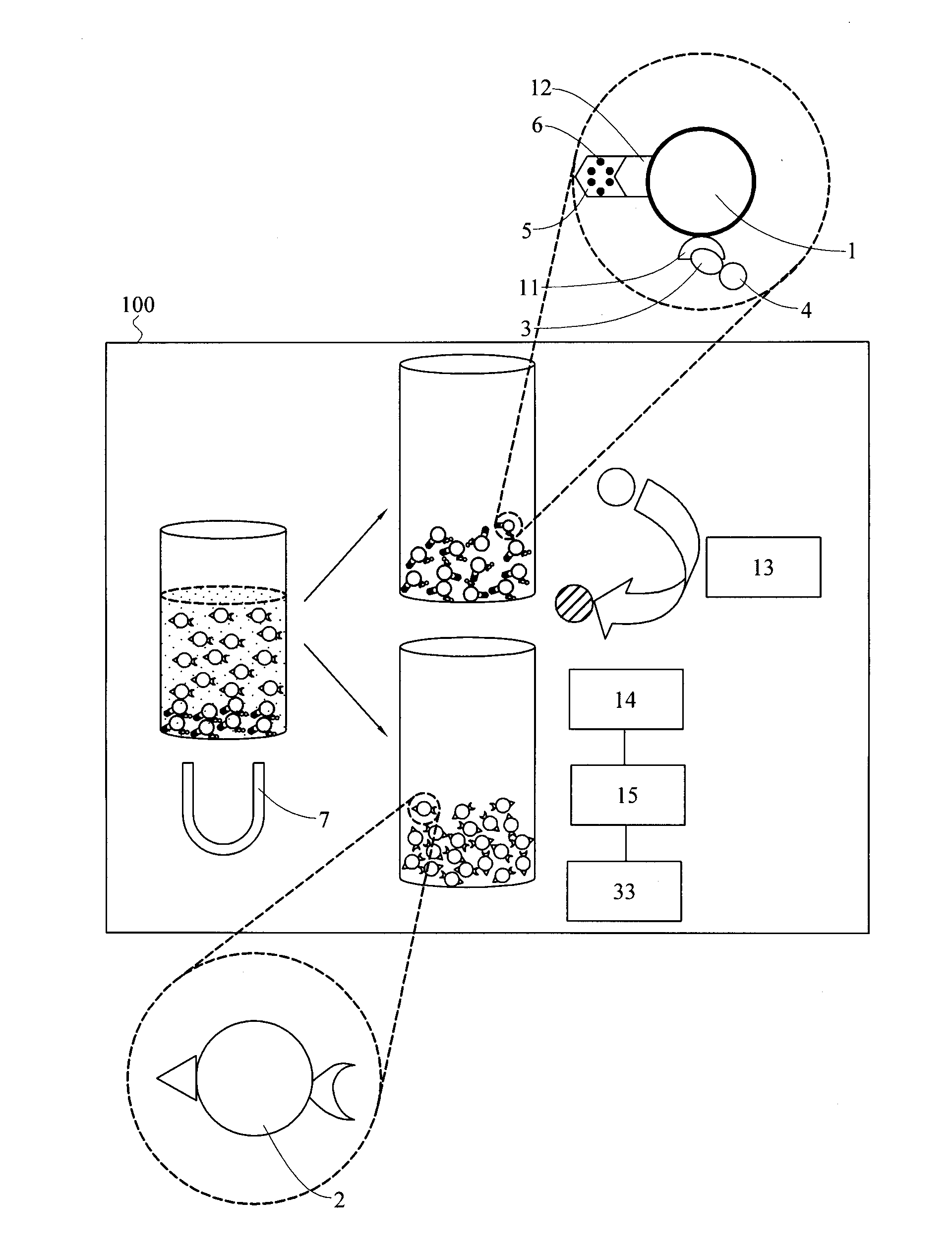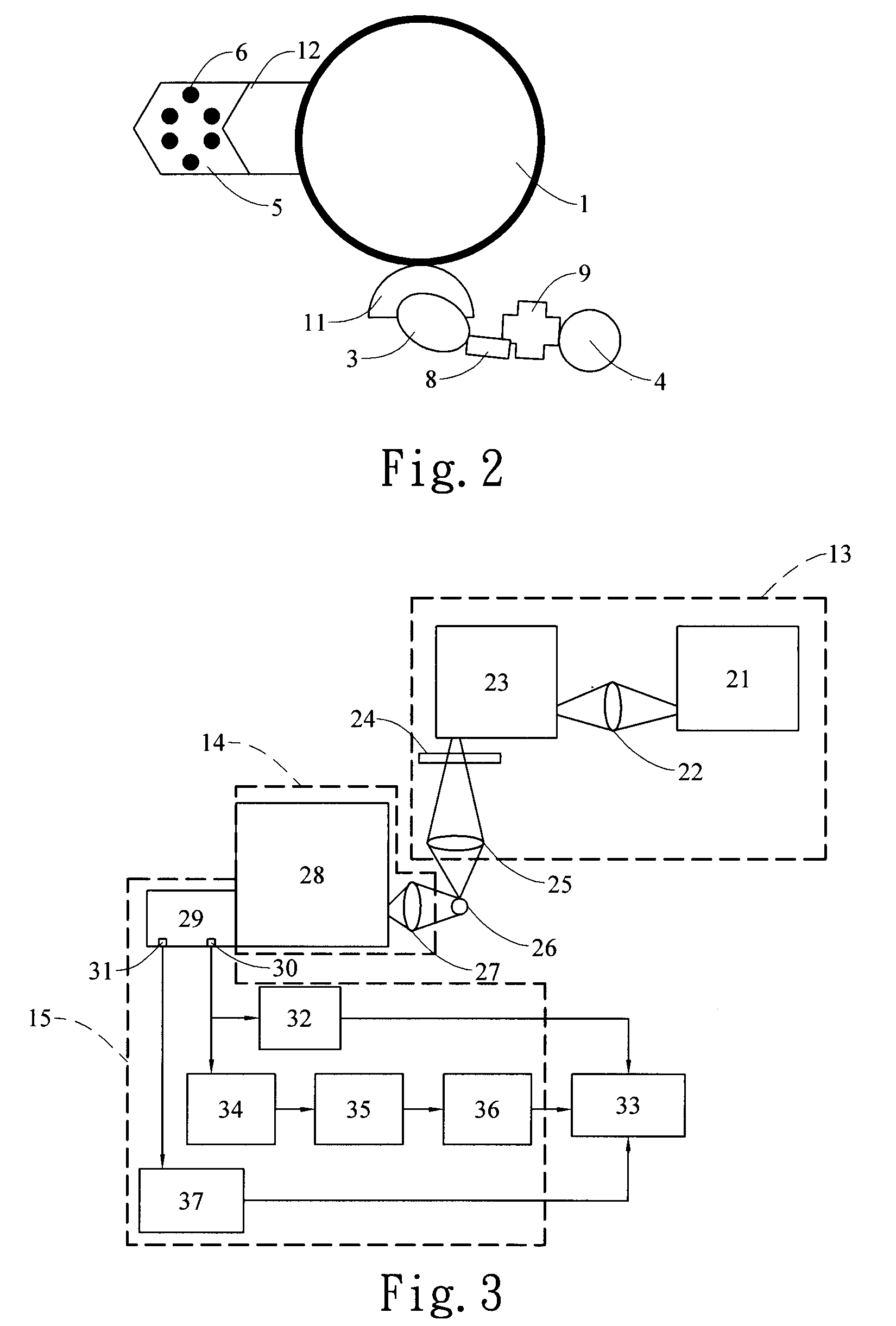Cell detecting system and quantum dot measuring system
- Summary
- Abstract
- Description
- Claims
- Application Information
AI Technical Summary
Benefits of technology
Problems solved by technology
Method used
Image
Examples
Embodiment Construction
[0023]Referring to FIG. 1, a cell detecting system 100 according to an embodiment of the present invention is provided. The trapping and detecting theory is firstly disclosed. In this embodiment, a specific cell 1 includes a first receptor 11 and a second receptor 12. A first bioactive ligand 3 is coupled to a quantum dot 4 and is capable of recognizing and coupling to the first receptor 11 of the specific cell 1; and a second bioactive ligand 5 is coupled to a magnetic bead 6 and is capable of recognizing and coupling to the second receptor 12 of the specific cell 1, wherein the diameter of the magnetic bead 6 is between 25 nm and 5000 nm.
[0024]With the above-mentioned coupling mechanism, a complex is formed with the specific cell 1, first bioactive ligand 3, quantum dot 4, second bioactive ligand 5 and magnetic bead 6 while a second cell 2 which is lack of the first receptor 11 and second receptor 12 is not recognized by and coupled to the first bioactive ligand 3 and second bioac...
PUM
 Login to View More
Login to View More Abstract
Description
Claims
Application Information
 Login to View More
Login to View More - R&D
- Intellectual Property
- Life Sciences
- Materials
- Tech Scout
- Unparalleled Data Quality
- Higher Quality Content
- 60% Fewer Hallucinations
Browse by: Latest US Patents, China's latest patents, Technical Efficacy Thesaurus, Application Domain, Technology Topic, Popular Technical Reports.
© 2025 PatSnap. All rights reserved.Legal|Privacy policy|Modern Slavery Act Transparency Statement|Sitemap|About US| Contact US: help@patsnap.com



